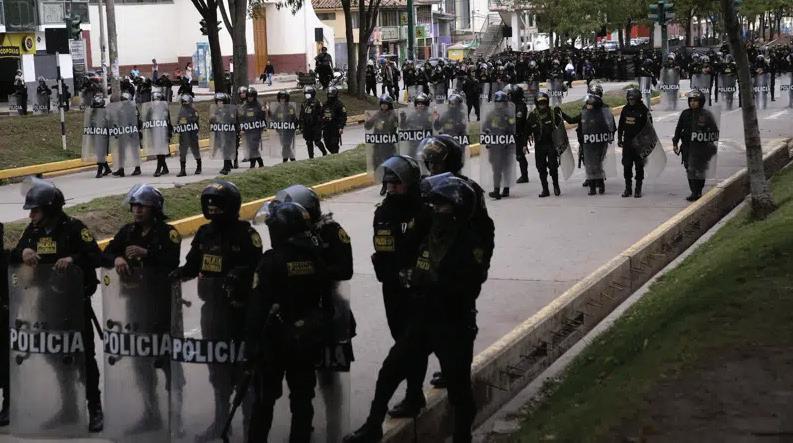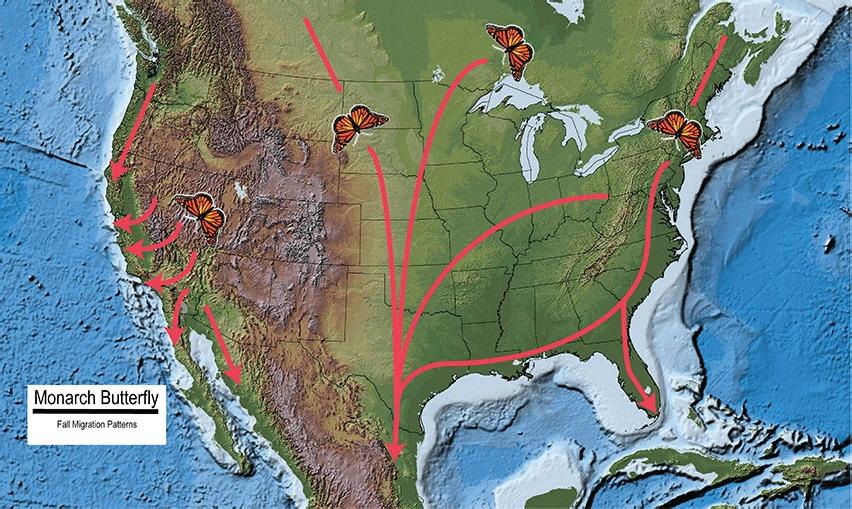
4 minute read
PERÚ: 67 MUERTOS EN PROTESTAS, FALLECE HERIDO CON 36 PERDIGONES
PERU: 67 Dead In Protests, Dies Injured With 36 Pellets
Por Franklin Briceño
Advertisement
PERÚ (AP) --- Perú sumó 67 muertos durante las manifestaciones que exigen la renuncia de la presidenta Dina Boluarte y los miembros del Congreso luego de que un manifestante —quien quedó herido en enero con 36 perdigones durante una protesta en una ciudad del sur— falleciera en un hospital capitalino.
Rosalino Flores, de 22 años, fue herido la tarde del 11 de enero durante una manifestación en la ciudad sureña de Cusco y murió en una cama del hospital Arzobispo Loayza de Lima, dijo a The Associated Press su hermano Juan José Flores, quien estaba junto a la víctima.

El momento en que un policía le dispara fue captado por un video de una cámara de seguridad de la calle 28 de julio en la ciudad de Cusco, donde Rosalino cayó al piso luego de recibir 36 perdigones. La familia mostró las imágenes a AP.
La familia de Flores acompañó a Lima a Rosalino, un estudiante de cocina, quien permaneció en la unidad de cuidados intensivos del antiguo hospital Arzobispo Loayza. Su salud empeoró porque los perdigones le afectaron los riñones, hígado e intestinos, indicó su hermano.
PERU (AP) --- Deaths in protests demanding the resignation of the president of Peru, Dina Boluarte, reached 67 after the death in a hospital in Lima of a protester who was wounded in January with 36 pellets in the south of the country.
Rosalino Flores, 22, injured on January 11 in a demonstration in the city of Cusco, died in a bed at the Arzobispo Loayza hospital in Lima, his brother Juan José Flores, who told the AP, told was with the victim.
The moment in which a police officer shoots Flores was captured by a video from a security camera on 28 de Julio street in Cusco, where he fell to the ground after receiving 36 pellets. The family showed the images to AP.
The Flores family accompanied Rosalino, a cooking student, to Lima, who remained in the intensive care unit of the former Arzobispo Loayza hospital. His health worsened because the pellets affected his kidneys, liver and intestines, his brother said.
The demonstrations have provoked international reactions. The annual report on human rights of the United States Department of State published reflected that there is a “major problem of impunity” for the abuses committed by the security forces during the protests against the Boluarte government.
FREE CHICKEN! OBTÉN UNA CENA DE DOS PIEZAS
CON

El recuento anual no calcula el número individual de mariposas, sino el número de hectáreas que cubren cuando se agrupan en las ramas de los árboles.
Disminuye N Mero De Mariposas Monarca Que Invernan En M Xico
Number of Monarch Butterflies
Wintering in Mexico Drops 22%
Por Mark Stevenson y Armando Solís MÉXICO (AP) --- El número de mariposas monarca que invernan en las montañas del centro de México disminuyó un 22% en comparación con el año anterior, y se triplicó el número de árboles perdidos en sus zonas favoritas de la región.
Las heladas y las “temperaturas extremas” en Estados Unidos pueden haber contribuido en el declive de la mariposa durante la temporada invernal más reciente, estimó Humberto Peña, comisionado de las reservas naturales de México.
Las monarcas al este de las Montañas Rocallosas en Estados Unidos y Canadá pasan el invierno en los bosques de abetos del estado de Michoacán, al oeste de Ciudad de México. La superficie total que ocuparon el pasado invierno se redujo a 2.21 hectáreas (5.4 acres), comparadas con 2.84 hectáreas (7 acres) del año previo.
MEXICO (AP) --- The number of monarch butterflies wintering in the mountains of central Mexico dropped 22% from the previous year, and the number of trees lost from their favored wintering grounds tripled.
Frost and “extreme temperatures” in the United States may have played a role in the butterfly’s decline during the most recent winter season, said Humberto Peña, director of Mexico’s nature reserves.
Monarchs east of the Rocky Mountains in the United States and Canada overwinter in the fir forests of the western state of Michoacan, west of Mexico City. The total area they occupied this past winter dropped to 5.4 acres (2.21 hectares), from 7 acres (2.84 hectares) a year earlier.

The annual butterfly count doesn’t calculate the individual number of butterflies, but rather the number of acres they cover when they clump together on tree boughs.
Gloria Tavera, conservation director of Mexico’s Commission for National Protected Areas, said the area of forest cover appropriate for the butterflies that was lost rose to 145 acres (58.7 hectares), from 46.2 acres (18.8 hectares) last year.
CHILE: SENADO DA PASO A REBAJA DE JORNADA LABORAL A 40 HORAS
The Law That Reduces The Working Day Is Advancing in Chile
CHILE (AP) --- El senado chileno aprobó por unanimidad un proyecto de ley que establece rebajar gradualmente la jornada laboral de 45 a 40 horas semanales, una de las promesas de campaña del presidente Gabriel Boric.
La iniciativa, que estuvo estancada en la Cámara alta por cuatro años, fue respalda por 45 votos a favor y ninguno en contra.
El proyecto, que persigue que la jornada laboral de 40 horas esté en vigencia plena en 2028, ingresó al Congreso en 2017 y fue aprobado por los diputados en 2019. Desde ese año, permaneció estancado en el Senado hasta octubre pasado, cuando fue visto en la comisión de Trabajo y luego por la de Hacienda.

La ley se aplicará en forma flexible, según las diversas realidades productivas y en for- ma gradual. Una vez que esté en vigor, lo hará en tres etapas: el primer año, la jornada se reducirá de 45 a 44 horas por semana, el tercer año a 42 y el quinto año entrará en plena vigencia, con jornadas de 40 horas semanales.

CHILE (News Rebeat) --- The Chilean Senate, by unanimous vote, approved the reduction of the working day from 45 to 40 hours after six years of work. The rule now passes to Deputies and, if approved, will make the country as the second in Latin America behind Ecuador, in having that law.
The initiative had 45 votes in favor, and now it must return to the Chamber of Deputies, in its third legislative process, after the Senate enter changes which aim to make the project viable, with gradualness and flexibility.
The bill is believed to be ready for enactment May 1stas proposed by the government of Gabriel Boric.
The project had been presented to Congress by Communist Party deputies, including Camila Vallejo, current government spokesperson.
Approved by the House in its first iteration, the initiative did not initially envisage gradual implementation, but after passing through the Senate it was established that this change will be made within five years.


